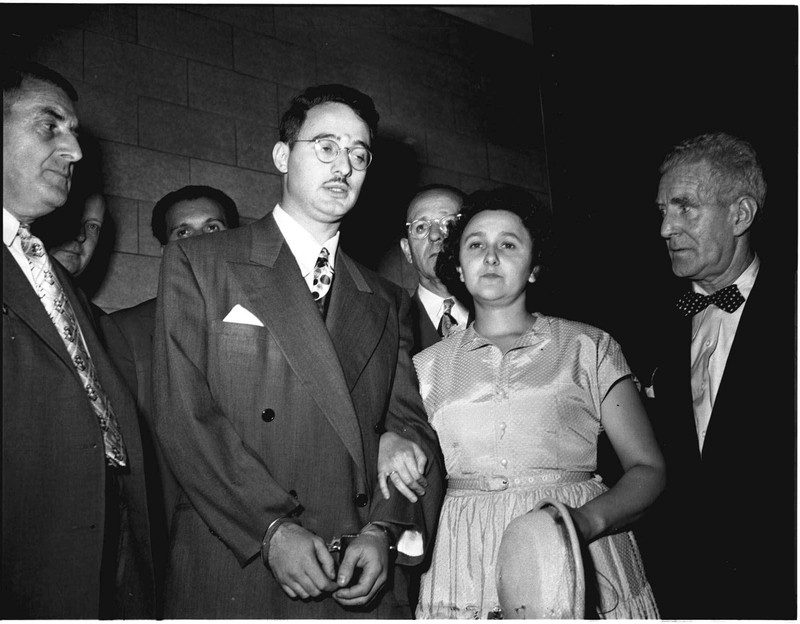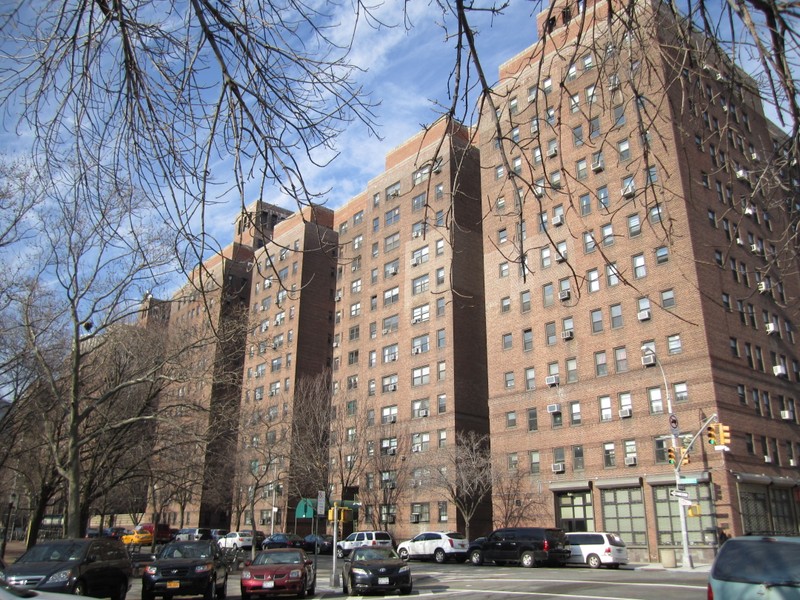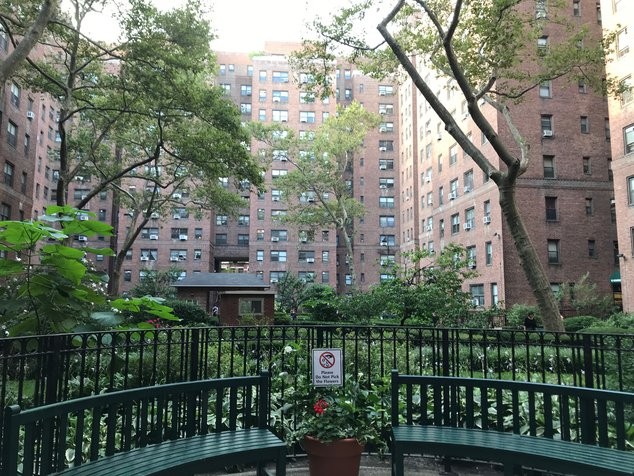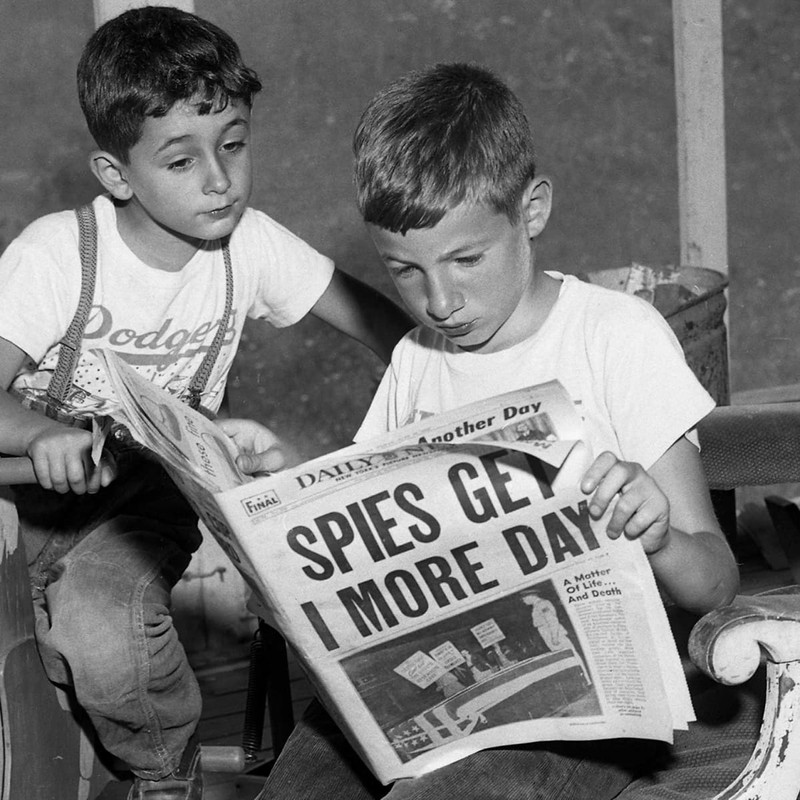Knickerbocker Village (former home of Julius and Ethel Rosenberg)
Introduction
Text-to-speech Audio
Images
Julius and Ethel Rosenberg

Knickerbocker Village

A courtyard at Knickerbocker Village

The Rosenbergs' sons

Backstory and Context
Text-to-speech Audio
The space on Monroe Street between Catherine and Market Streets was once home to slum dwellings that housed mostly Italian families. The area was known as “Lung Block” because of the alarmingly high rates of tuberculosis, a condition exacerbated by poor ventilation and mostly windowless apartments. Lung Block was a notorious part of the city, as well-known for its poverty and crime as the notorious Five Points.
In the 1920s, developer Frederick Fillmore French began buying up parcels of land on Lung Block, eventually owning more than fourteen acres. In 1933, French was able to get federal funding to build housing through the New Deal. The result was Knickerbocker Village, the country’s first federally subsidized housing development. The development consists of twelve 13-story buildings housing more than 1,500 apartments. Rents in the new development were substantially higher than the old Lung Block apartments (it increased from about $5 a room to about $12.50), which forced out most of the original residents of the neighborhood. While they moved on to other slum neighborhoods, most of the tenants who moved into the village were white collar workers.
Among the many residents who have come and gone in Knickerbocker Village’s long history, one otherwise ordinary couple stands out. Julius and Ethel Rosenberg met in 1935 and eventually married and began living in the village. At the time, many of the development’s residents (as well as people in the Lower East Side, generally) were of Russian and Eastern European heritage, and a number of them were Communists, even if only briefly. Julius and Ethel reportedly met when both were members of the Young Communist League.
In 1950, both Rosenbergs were arrested and charged with espionage for allegedly supplying information about America’s development of an atomic bomb to the Soviet Union. Ethel’s brother, David Greenglass, worked on the Manhattan Project, and when he was arrested, he confessed and maintained that he brought information from Los Alamos to the Rosenberg apartment. He would also claim that Ethel typed up the information that he gave to Julius so that it could be passed on to the Soviets. This activity allegedly took place in the Rosenbers’ apartment on the eleventh floor of the Knickerbocker building on 10 Monroe Street.
Both Rosenbergs were convicted, largely on the testimony of Greenglass and his wife, although the couple remained defiant throughout the proceedings and refused to incriminate each other or anyone else. They were sentenced to death on were executed on June 19, 1953, leaving behind two young sons.
In the decades that followed, evidence which was unavailable in the 1950s has revealed that Julius Rosenberg was involved in espionage, but that the information he supplied to the Soviets was likely of little value. Ethel Rosenberg’s role, if any, remains in doubt, with her sons and a number of historians arguing that she was most likely charged to put pressure on her husband to confess.
In the 1970s, French sold the Knickerbocker Village to new owners. The development underwent an extensive renovation and continues to offer affordable housing.
Cite This Entry
Woodham, Rebecca. "Knickerbocker Village (former home of Julius and Ethel Rosenberg)." Clio: Your Guide to History. January 27, 2021. Accessed April 1, 2025. https://theclio.com/entry/125433
Sources
Berick, Julia . Hometown Traitors: A Tale of Love, Betrayal, and Spies on the Lower East Side , Tenement Museum. Accessed January 27th 2021. https://www.tenement.org/blog/hometown-traitors-a-tale-of-love-betrayal-and-spies-on-the-lower-east-side/.
Knickerbocker Village , New York History Walks . January 11th 2012. Accessed January 27th 2021. https://nyhistorywalks.wordpress.com/2012/01/11/knickerbocker-village/.
Alexandra, Giulia . Yellow Fever and Red Scare: the Very Colorful History of Knickerbocker Village , Bedford and Bowery. December 31st 2014. Accessed January 27th 2021. https://bedfordandbowery.com/2014/12/yellow-fever-and-red-scare-the-very-colorful-history-of-knickerbocker-village/.

